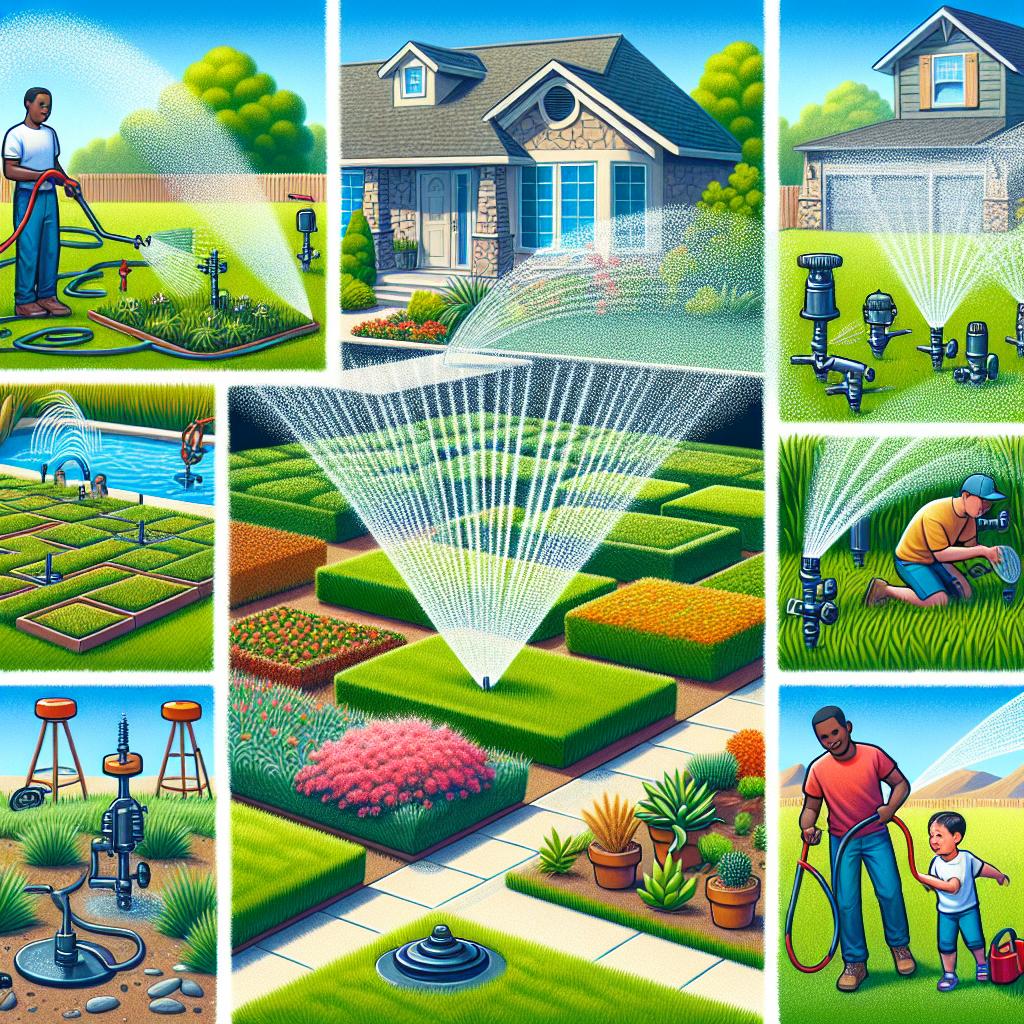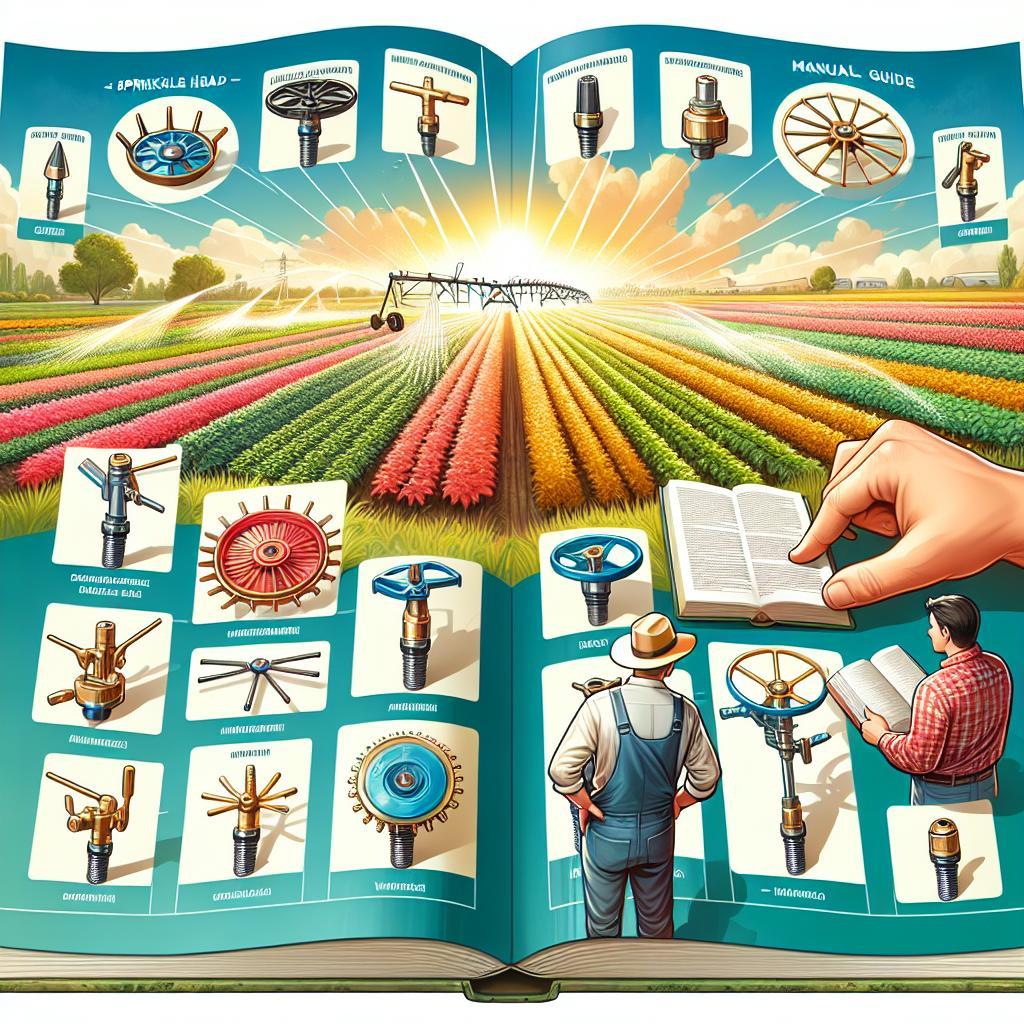This post may contain affiliate links which means I may receive a commission for purchases made through links. Learn more on my Private Policy page.
Title: Sprinkle Some Knowledge: Your Guide to Choosing the Perfect Sprinkler Head for Farm Irrigation
When it comes to nurturing your crops and keeping your farm thriving, every drop of water counts! Imagine a warm sun-drenched morning, as you stroll through rows of lush greenery, each plant dancing to the rhythm of a well-timed sprinkle.The secret to achieving this idyllic scene lies in one essential element: the right sprinkler head. With a plethora of options available, selecting the perfect sprinkler head for your farm irrigation can feel like navigating a maze. But fear not, fellow farmers! In this amiable guide, we’ll dig deep into the world of sprinkler heads, exploring tips and tricks to help you make an informed decision that’ll leave your crops flourishing and your watering woes behind. Whether you’re a seasoned agronomist or just starting out, you’ll find all the insights you need to let your fields thrive. So, let’s embark on this watering journey together and unlock the potential of your farm!
choosing the perfect Sprinkler Head for Your Unique Crops
When selecting a sprinkler head for your farm,it’s crucial to identify the specific watering needs of your crops. Different crops have varying water requirements,and understanding these needs can help you choose the right sprinkler head type. Consider factors such as crop type, growth stage, and soil characteristics.For example, delicate seedlings may need lighter, more frequent applications, while mature plants might require a heavier flow. Additionally, the distribution pattern of the sprinkler head should closely match the spacing of your plants to ensure even moisture distribution.
Here are some points to consider when choosing your sprinkler head:
- Spray Pattern: Determine if a full-circle, half-circle, or adjustable spray pattern is appropriate for your field layout.
- Flow Rate: Ensure the head’s flow rate aligns with your irrigation system’s capacity.
- Height and Coverage: Choose a head that can provide coverage at the right height without obstructing plant growth.
- Durability: Opt for materials that can withstand local environmental conditions, such as UV resistance in sunny areas.
| Sprinkler Head Type | Best For | Advantages |
|---|---|---|
| Fixed Spray | Flower beds | Simple installation, low maintenance |
| Rotary | Large fields | Efficient water usage, covers wide areas |
| Drip | Vegetable gardens | Targeted watering, reduced evaporation |

Understanding Water Pressure and Flow Rates for Optimal Performance
Understanding water pressure and flow rates is crucial for ensuring that your farm’s irrigation system functions efficiently. Water pressure measures the force of water flow through your system, while flow rate indicates the volume of water delivered over time.To achieve optimal performance from your sprinkler heads, it is essential to evaluate these factors.
When selecting the right sprinkler head, consider the following key aspects:
- Pressure Requirements: Different sprinkler heads operate best at specific pressure ranges. ensure your system’s water pressure aligns with your chosen sprinkler heads.
- Flow Rate Compatibility: The flow rate of your irrigation system should match the output requirements of the sprinkler heads to prevent over-watering or under-watering.
- Spray Patterns: Choose a sprinkler head that provides an appropriate spray pattern for your crops, whether it’s a mist for delicate plants or a more concentrated stream for larger fields.
| Sprinkler Type | ideal Pressure (PSI) | Flow Rate (GPM) | Usage |
|---|---|---|---|
| Impact sprinkler | 20-60 | 2-50 | Large Fields |
| Gear-Driven Sprinkler | 30-60 | 0.5-5 | Medium Areas |
| Drip Irrigation | 10-30 | 0.1-2 | Row Crops |

Exploring Different Sprinkler Types and Their Best Uses
When selecting the ideal sprinkler system for your farm,understanding the diverse types available is essential. Each sprinkler type possesses unique features and functions that can cater to different agricultural needs. For example, impact sprinklers are known for their durability and ability to cover large areas. They work effectively for row crops and pastures. On the other hand, drip irrigation systems deliver water directly to the root zone, making them perfect for orchards and high-value crops where efficiency is paramount. Additionally, oscillating sprinklers provide a gentle water spray pattern, suitable for small to medium-sized gardens or lawns where coverage needs to be evenly distributed.
Consider your specific watering requirements when choosing a system. Factors such as the size of the area, type of crops, and water availability all play a crucial role. here are a few key points to keep in mind:
- Coverage Area: Ensure the sprinkler can adequately water the intended area.
- Flow Rate: Check the gallons per minute (GPM) the sprinkler can handle.
- Water efficiency: Opt for systems that minimize evaporation and runoff.
- Maintenance: Some systems require more upkeep than others,so consider your capacity for maintenance.
To make a more informed decision, refer to the table below that summarizes common sprinkler types along with their best uses:
| Sprinkler Type | Best Use |
|---|---|
| Impact Sprinkler | Large fields and pastures |
| Drip Irrigation | Row crops and precision agriculture |
| Oscillating Sprinkler | Medium gardens and lawns |
| stationary Sprinkler | Small garden beds and flower areas |

Maintaining Your Sprinkler System for Long-Lasting Efficiency
To ensure your irrigation system operates at peak performance, regular maintenance is essential. Start by checking for any leaks or clogs in your sprinkler heads. A simple inspection can save on water costs and keep your crops well-hydrated. Additionally, it’s vital to adjust the spray patterns of your heads to match your field’s layout. This ensures even coverage and prevents overwatering, which can lead to root rot and other plant diseases.
Another vital aspect of maintenance is seasonal adjustments. Before the growing season begins, test each sprinkler head for functionality. Replace any damaged components immediately to avoid compromising your irrigation efforts. Setting a seasonal schedule for maintenance activities can definitely help you stay organized. Consider incorporating these key tasks:
- Inspect sprinkler heads for wear and tear
- Clean filters and nozzles regularly
- Check the timer settings for accuracy
- Adjust spray radius according to plant needs
Concluding Remarks
As we wrap up our exploration of selecting the right sprinkler head for your farm irrigation, remember that every field is unique, just like the farmer tending to it. By considering factors such as crop type,soil quality,and your specific watering needs,you’re not just making a choice—you’re crafting a vital part of your farm’s ecosystem.
Choosing the right sprinkler head is akin to finding the perfect tool in a well-stocked shed; it requires a bit of knowledge and a dash of intuition. With the tips and insights shared in this article, you’re now better equipped to make informed decisions that will help your crops flourish and your farm thrive.
So, step into your fields with confidence! As you implement your new watering solutions, may they bring life to your soil and a bountiful harvest to your tables. Remember, great farming is all about nurturing growth, and with the right tools in hand, you can cultivate not just crops, but dreams. Happy irrigating! 🌱💧
This post may contain affiliate links which means I may receive a commission for purchases made through links. Learn more on my Private Policy page.

